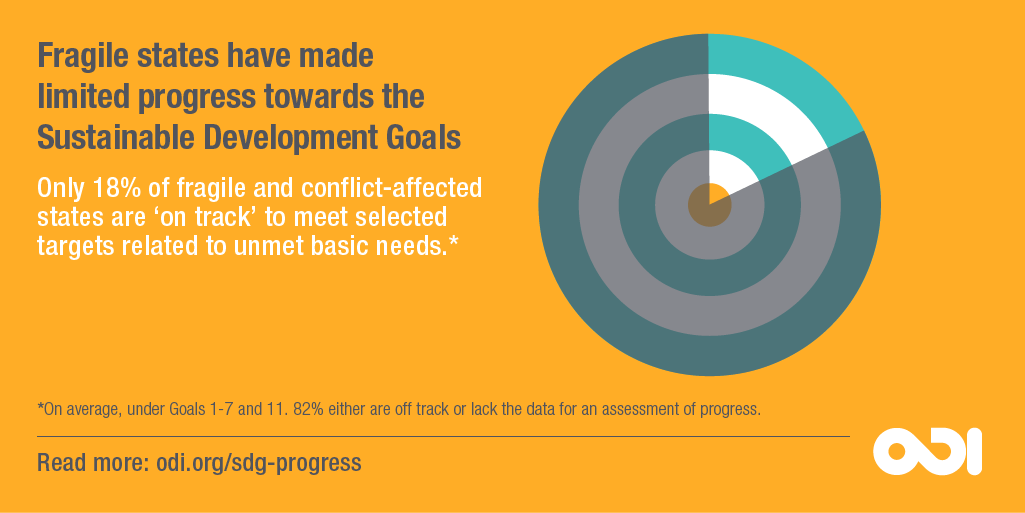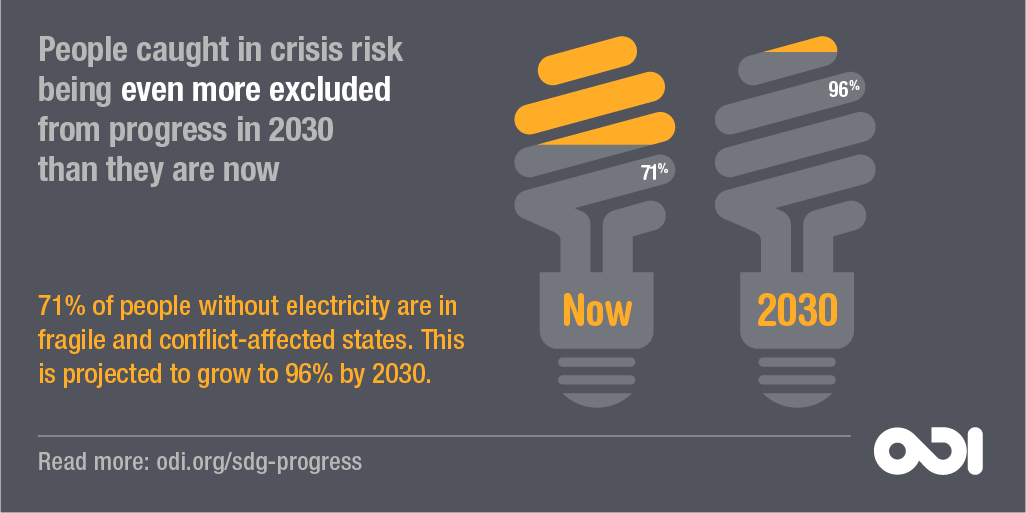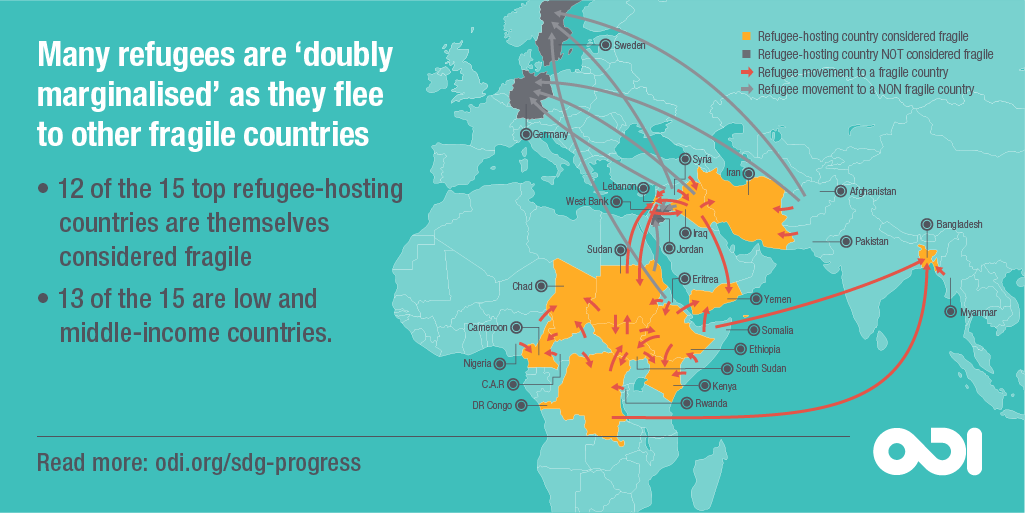As they signed the Sustainable Development Goals (SDGs), all countries pledged to reach and deliver progress for those who are furthest behind first. This commitment to ‘leave no one behind’ is at the heart of the SDGs: not only is it morally unacceptable to keep vast swathes of people structurally locked out of progress but delivering on it is a prerequisite for achieving Agenda 2030.
People caught in crisis – those living in conflict, and those who are displaced within their own countries or across borders – often fall through the cracks of different authorities’ responsibilities or are explicitly excluded by governments in their national and sectoral plans (IRC, 2018a). Without the concerted efforts of the international community to address the needs of people caught in crisis and to measure the impact of this support, we will not achieve the SDGs for all, and the gap between this marginalised group and the rest of the world will grow.
We examine country level progress against the SDGs and make projections as to how much more effort will be needed to reach them by 2030. By identifying the gaps in SDG progress for fragile and conflict-affected states, we highlight the challenges and opportunities for meeting the SDGs for people caught in crisis and make recommendations for further action.






